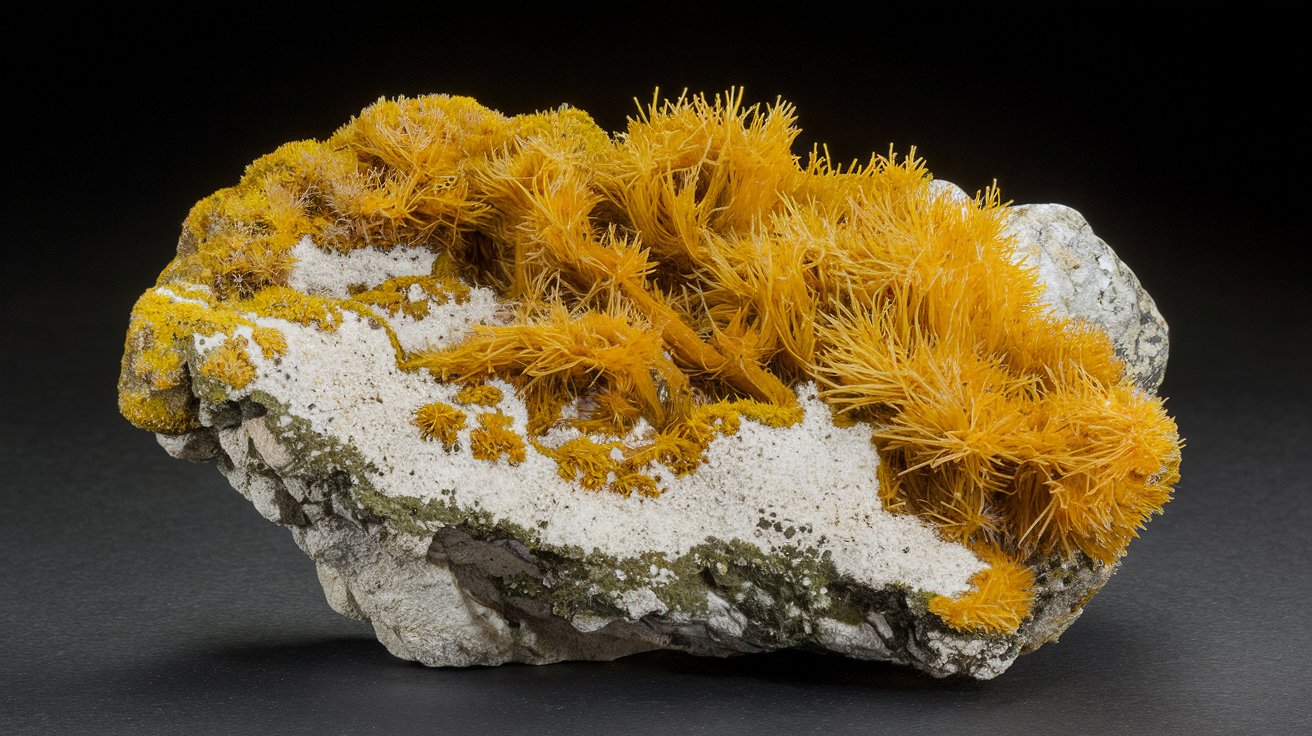
Cacoxenite is a fascinating mineral often found in quartz and amethyst. Known for its golden-yellow to brownish needle-like inclusions, it adds a unique beauty to any gemstone collection. But what makes cacoxenite truly special? It's believed to enhance spiritual growth, making it popular among crystal enthusiasts. This mineral isn't just eye candy; it's also a phosphate mineral, rich in iron and aluminum. Found in places like Brazil, the USA, and Germany, cacoxenite has a global presence. Ready to learn more? Here are 40 intriguing facts about this captivating mineral that will leave you amazed!
Key Takeaways:
- Cacoxenite is a vibrant mineral with unique properties, often found in quartz and amethyst. It promotes spiritual growth and is popular in jewelry, meditation, and energy healing practices.
- Found in various locations worldwide, Cacoxenite has a rich history and continues to captivate people with its beauty and metaphysical properties. It is believed to enhance the properties of other stones and is considered a stone of ascension.
What is Cacoxenite?
Cacoxenite is a fascinating mineral often found in quartz and amethyst. Its unique properties and vibrant colors make it a favorite among collectors and gem enthusiasts.
- Cacoxenite is a phosphate mineral that typically forms in radiating needle-like crystals.
- The name "Cacoxenite" comes from the Greek words "kakos" and "xenos," meaning "bad" and "guest," respectively, because it was originally considered an impurity in iron ores.
- It often appears in shades of yellow, brown, or reddish-brown, adding a striking contrast when found in quartz or amethyst.
- This mineral has a Mohs hardness of 3-4, making it relatively soft compared to other gemstones.
- Cacoxenite is commonly found in iron ore deposits, especially in regions like Germany, the USA, and Brazil.
Unique Properties of Cacoxenite
Cacoxenite is not just visually appealing; it also boasts some intriguing properties that make it stand out.
- It is known for its fibrous and radiating crystal formations, which can create stunning visual effects.
- When embedded in quartz or amethyst, Cacoxenite can enhance the overall energy and metaphysical properties of the host stone.
- This mineral is believed to promote spiritual growth and transformation, making it popular in crystal healing practices.
- Cacoxenite is often associated with the third eye and crown chakras, aiding in meditation and spiritual awareness.
- It is said to help clear negative energy and promote a sense of calm and well-being.
Uses of Cacoxenite
Cacoxenite has various uses, from jewelry to metaphysical practices. Its unique appearance and properties make it versatile and valuable.
- It is often used in jewelry, particularly in pendants, rings, and earrings, where its vibrant colors can be showcased.
- Cacoxenite is a popular choice for crystal grids and altars, where it is used to amplify energy and intention.
- Many people use Cacoxenite in meditation practices to enhance their spiritual connection and intuition.
- It is also used in energy healing sessions to help balance and align the chakras.
- Some believe that Cacoxenite can aid in manifesting one's desires and goals by amplifying positive energy.
Where to Find Cacoxenite
Cacoxenite can be found in various locations around the world, often in conjunction with other minerals.
- Significant deposits of Cacoxenite have been found in the Huanuni mine in Bolivia.
- The mineral is also found in the iron ore deposits of the Lake Superior region in the USA.
- In Germany, Cacoxenite is commonly found in the iron mines of the Harz Mountains.
- Brazil is another notable source, particularly in the Minas Gerais region, where it is often found in quartz and amethyst.
- Smaller deposits have been discovered in countries like France, the UK, and Australia.
Cacoxenite in History
Cacoxenite has a rich history, with various cultures recognizing its unique properties and uses.
- Ancient civilizations often used Cacoxenite as a pigment due to its vibrant colors.
- In the 19th century, it was initially considered a nuisance in iron ore mining because it reduced the quality of the ore.
- Over time, its unique beauty and properties led to its appreciation as a valuable mineral.
- Cacoxenite was first described in 1825 by the German mineralogist Johann Friedrich Ludwig Hausmann.
- Today, it is highly sought after by mineral collectors and crystal enthusiasts worldwide.
Cacoxenite in Modern Times
In contemporary times, Cacoxenite continues to captivate people with its beauty and metaphysical properties.
- It is often featured in crystal healing and metaphysical shops, where it is sold as tumbled stones, raw specimens, and jewelry.
- Cacoxenite is frequently used in holistic healing practices to promote emotional and spiritual well-being.
- Many people incorporate Cacoxenite into their daily routines, carrying it as a pocket stone or wearing it as jewelry.
- It is also popular in the world of alternative medicine, where it is believed to support physical health and vitality.
- Cacoxenite's unique appearance makes it a favorite among artists and designers, who use it in various creative projects.
Fun Facts about Cacoxenite
Here are some fun and lesser-known facts about this intriguing mineral.
- Cacoxenite is sometimes referred to as "Super Seven" when found in combination with other minerals like amethyst, quartz, and rutile.
- It is believed to enhance the properties of other stones it is combined with, making it a powerful addition to any crystal collection.
- Some people use Cacoxenite in feng shui practices to attract positive energy and harmony into their homes.
- It is often used in elixirs and gem waters, where its energy is believed to infuse the water with healing properties.
- Cacoxenite is considered a stone of ascension, helping individuals connect with higher realms and spiritual guides.
Caring for Cacoxenite
Proper care can help maintain the beauty and energy of Cacoxenite.
- Due to its softness, Cacoxenite should be handled with care to avoid scratches and damage.
- It is best cleaned with a soft cloth and mild soap, avoiding harsh chemicals and abrasive materials.
- Storing Cacoxenite separately from harder stones can prevent it from getting scratched or chipped.
- Regularly cleansing Cacoxenite with sage, moonlight, or other cleansing methods can help maintain its energetic properties.
- Keeping Cacoxenite away from prolonged exposure to direct sunlight can prevent its colors from fading.
The Final Word on Cacoxenite
Cacoxenite, a fascinating mineral, boasts a rich history and unique properties. Known for its vibrant colors and intriguing formations, it captivates collectors and gem enthusiasts alike. This mineral often appears in quartz, amethyst, and other stones, enhancing their beauty and value. Its metaphysical properties, believed to promote spiritual growth and emotional healing, add another layer of allure.
Understanding cacoxenite's origins, characteristics, and uses can deepen appreciation for this remarkable mineral. Whether you're a seasoned collector or just starting out, adding cacoxenite to your collection can bring both aesthetic pleasure and potential metaphysical benefits. Keep exploring the world of minerals and gems, and you'll continue to uncover fascinating facts and treasures. Happy collecting!
Frequently Asked Questions
Was this page helpful?
Our commitment to delivering trustworthy and engaging content is at the heart of what we do. Each fact on our site is contributed by real users like you, bringing a wealth of diverse insights and information. To ensure the highest standards of accuracy and reliability, our dedicated editors meticulously review each submission. This process guarantees that the facts we share are not only fascinating but also credible. Trust in our commitment to quality and authenticity as you explore and learn with us.


